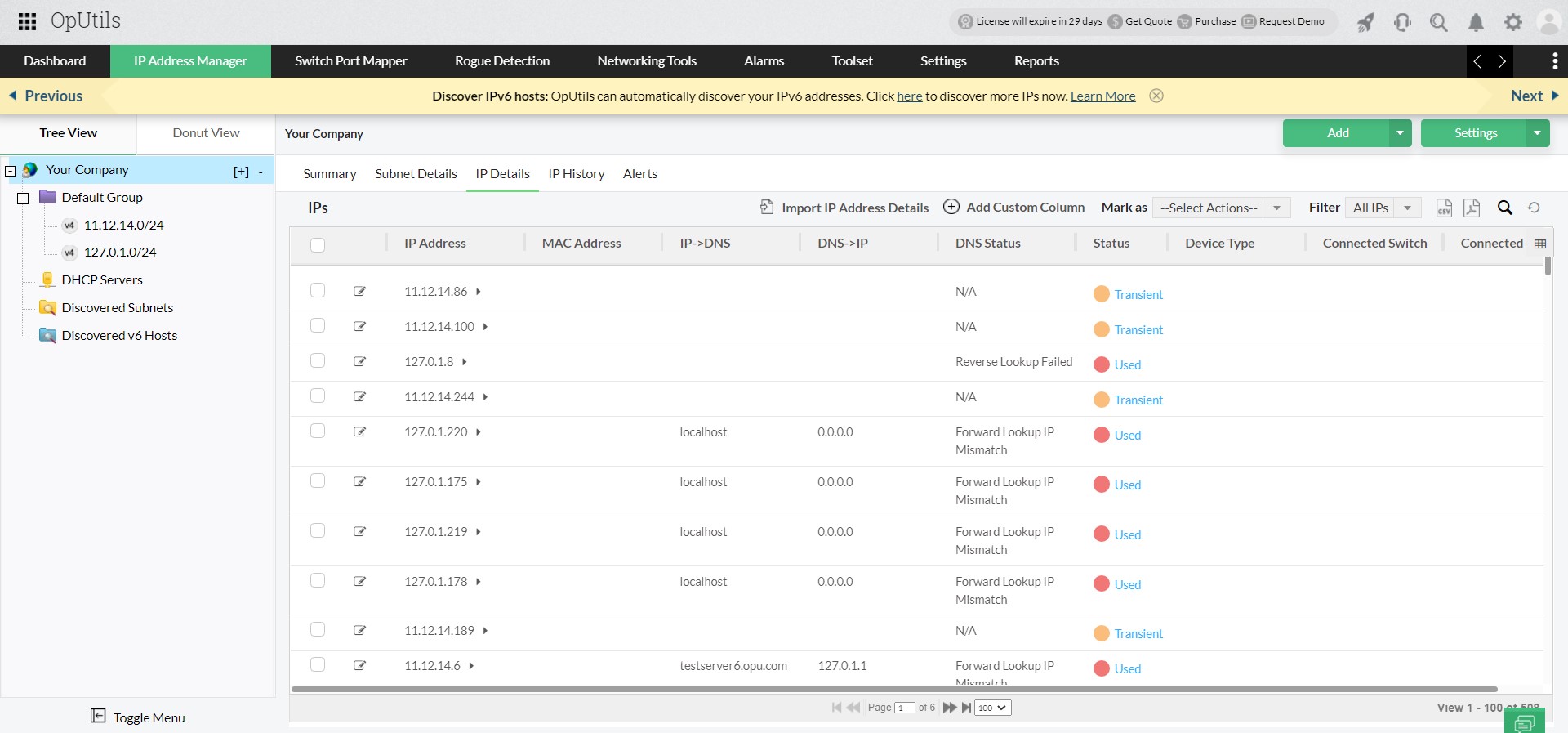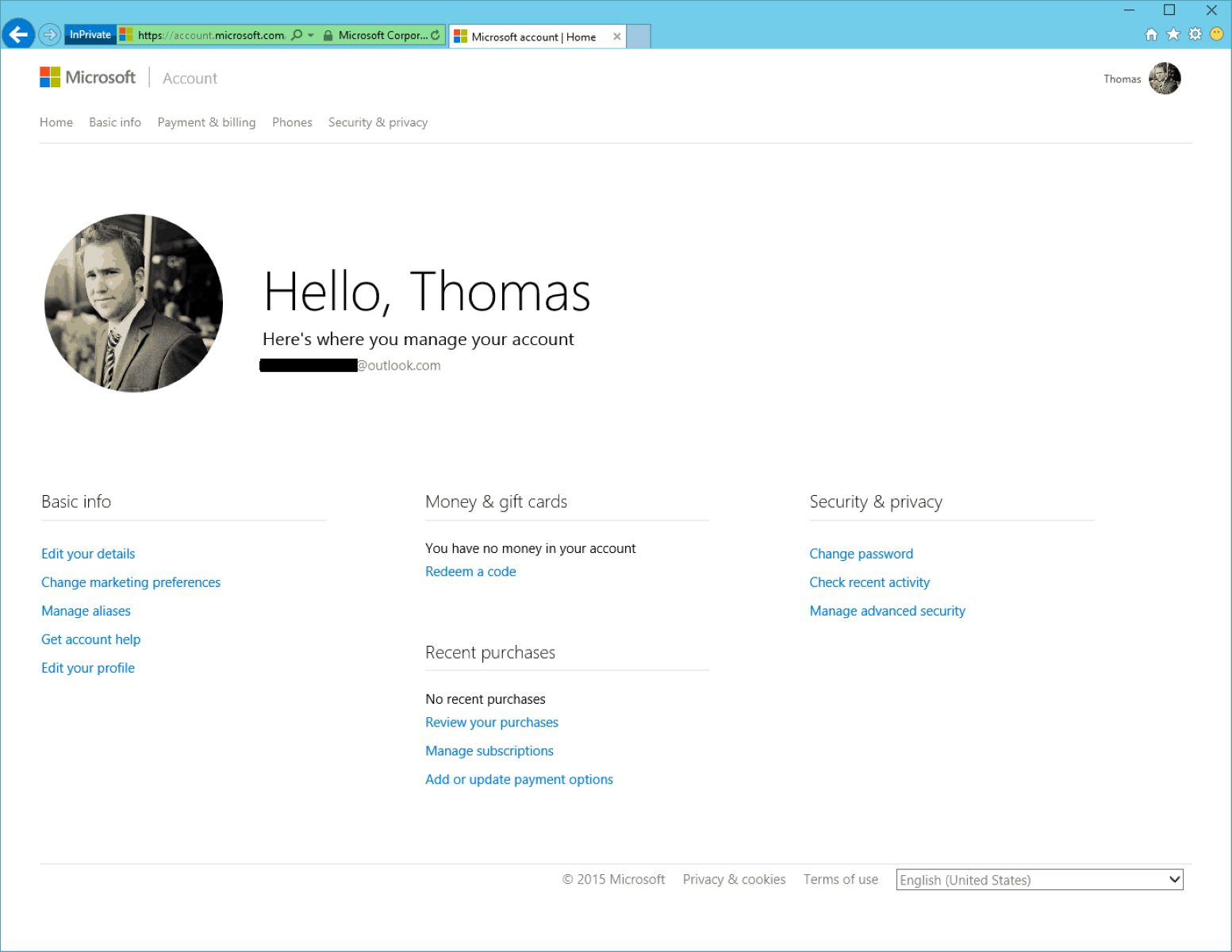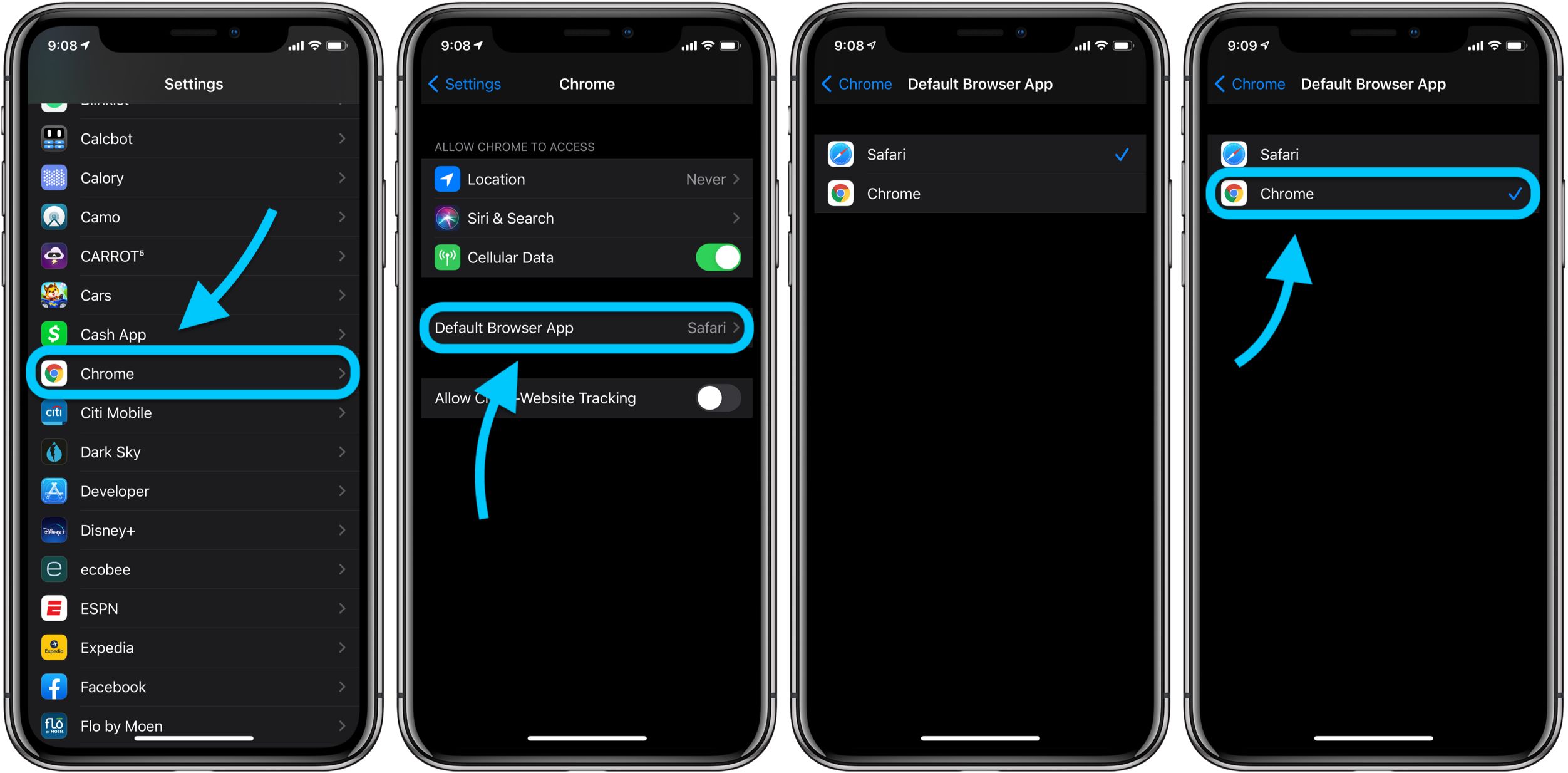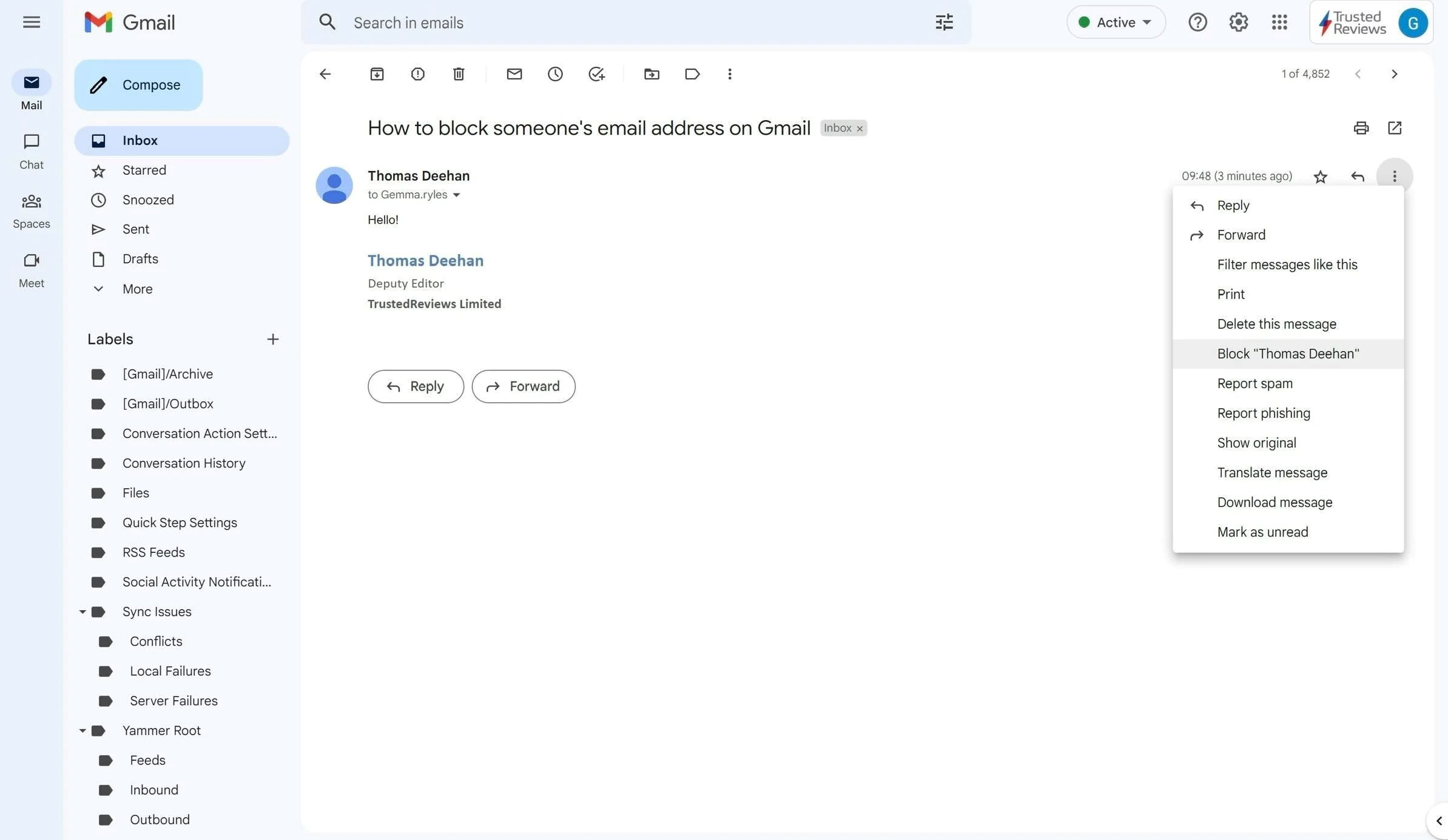Introduction
Welcome to the digital age, where communication happens at the click of a button. One of the most fundamental aspects of online communication is email. Whether you’re applying for a job, connecting with friends, or signing up for a new social media platform, you’ll need an email address. But what exactly is an email address? How is it structured, and how can you create one for yourself?
In this article, we’ll explore the ins and outs of email addresses. We’ll break down their structure, discuss different types of email addresses, and provide tips for creating a unique one. Additionally, we’ll cover how to find your email address if you’re unsure or new to the digital realm.
Understanding email addresses is essential in today’s interconnected world. By having a firm grasp of how email addresses work, you’ll be better equipped to navigate the online landscape and make the most of your digital communication.
So, without further ado, let’s dive into the fascinating world of email addresses and unravel their mysteries.
What is an email address?
An email address is a unique identifier used for sending and receiving electronic mail messages. It serves as your digital mailbox, enabling others to communicate with you online. Much like a physical address, an email address allows information to be delivered directly to you in the virtual world.
An email address consists of three main components: the username, the domain name, and the extension. Let’s break them down to understand their roles in the overall structure of an email address.
The username is the personal identifier that comes before the “@” symbol in an email address. It signifies the individual or organization to whom the email address belongs. For example, in the email address “johnsmith@example.com,” the username is “johnsmith.”
The domain name is the unique address where the email will be delivered. It typically represents the email service provider or the organization associated with the email address. In the example “johnsmith@example.com,” the domain name is “example.com.”
The extension represents the top-level domain (TLD) and further categorizes the email address. Common extensions include “.com,” “.org,” or “.edu.” In our example, the extension is “.com.”
Together, these three components create a complete email address that can be used for communication purposes.
Email addresses provide a way to identify and differentiate users, ensuring accurate message delivery in the vast landscape of the internet. They have become an integral part of our personal and professional lives, enabling us to connect and communicate with others from anywhere in the world.
In the next section, we’ll explore how email addresses are structured in more detail, shedding light on the various elements that make up this essential online identifier.
How is an email address structured?
An email address is structured in a specific format to ensure proper communication between email servers and recipients. Understanding the structure of an email address can help you better comprehend how they work and how to create your own.
As mentioned earlier, an email address consists of three main components: the username, the domain name, and the extension. Let’s explore each of these components in more detail:
The username is the personal identifier that comes before the “@” symbol in an email address. It can contain a combination of letters, numbers, and special characters. However, it’s important to note that not all special characters are allowed in email address usernames. Commonly used characters include letters (both uppercase and lowercase), numbers, underscores (“_”), and periods (“.”). The username should be unique to the email server or provider you choose.
The domain name is the second part of an email address, following the “@” symbol. It represents the specific domain or organization associated with the email address. For example, in the email address “johnsmith@example.com,” the domain name is “example.com.” The domain name determines the email server responsible for handling incoming and outgoing messages for that address.
The extension completes the structure of an email address. It is typically a three-letter code that represents the top-level domain (TLD). Common extensions include “.com,” “.org,” “.net,” or country-specific extensions like “.uk” for the United Kingdom and “.ca” for Canada. The extension helps categorize the email address and specifies the type of organization or website associated with it.
When writing an email address, the username, domain name, and extension are separated by the “@” symbol. For example, “username@example.com.” Using this structure ensures that email servers and clients can properly route and deliver messages to the intended recipients.
Now that we’ve explored the structure of an email address, let’s delve into the different types of email addresses you may encounter.
The Username
The username is an essential component of an email address and serves as a personal identifier for the email account holder. It precedes the “@” symbol and is unique to each user or organization.
When choosing a username for your email address, there are a few key considerations to keep in mind:
- Uniqueness: Your username should be unique to you or your organization to avoid any confusion or conflicts with existing email addresses. It’s best to choose a username that is not too common or easily mistaken for someone else’s.
- Readability: Select a username that is easy to read and remember. Avoid using excessive numbers, random characters, or complicated combinations that may be difficult for others to recall or type correctly.
- Professionalism: If you are creating an email address for professional purposes, such as for job applications or business communication, consider using a username that reflects your name, company, or industry. This helps create a professional impression and enhances recognition.
- Security: It’s crucial to choose a secure username to protect your email account from unauthorized access. Avoid using easily guessable information, such as birthdays or simple dictionary words, and consider incorporating a combination of letters, numbers, and special characters to make it more secure.
When creating a username, it is important to adhere to the specific guidelines set by your chosen email provider. Different providers may have different limitations on the length, characters, and allowed special characters for usernames. It’s always a good idea to review their guidelines or terms of service to ensure compliance.
Furthermore, it’s worth noting that some email services offer the option of creating a custom email domain, which allows you to have a username with your own domain name (e.g., “yourname@yourdomain.com”). This can provide a more personalized and professional touch to your email address.
Overall, choosing the right username for your email address is a crucial step in creating your online identity. It should be memorable, unique, and reflect your personal or professional brand. Now that we’ve covered the username, let’s move on to discussing the next component of an email address: the domain name.
The Domain Name
The domain name is a vital component of an email address and plays a significant role in identifying the specific email server or organization associated with the address. It follows the “@” symbol and precedes the extension.
When choosing a domain name for your email address, there are a few factors to consider:
- Email Service Provider: If you are using a free email service, such as Gmail or Yahoo Mail, your domain name will be determined by the email provider. For example, if you create an email address with Gmail, your domain name will be “@gmail.com.” Similarly, Yahoo Mail will use “@yahoo.com” as the domain name.
- Custom Domain: If you have your own website or prefer a personalized touch, you can opt for a custom domain name. This involves registering a domain (e.g., “yourdomain.com”) and linking it to an email service. Custom domains are often used by businesses or individuals looking to establish a professional online presence.
- Organization or Institution: In some cases, email addresses are associated with a specific organization, institution, or company. For example, employees of a company may have email addresses that end with “@companyname.com” or students of a university may have email addresses ending with “@university.edu.
The domain name not only helps identify the email server but also contributes to the credibility and professionalism of the email address. A well-known domain name can instill trust in the recipient and enhance the chances of your email being read and responded to.
It’s worth noting that when you send an email, the domain name is an essential part of the email’s header information. It helps the receiving server identify the sender and determine the legitimacy of the email. This is crucial in preventing spam, phishing, or other malicious activities.
When choosing or using a domain name for your email address, be aware of the guidelines and restrictions set by your email service provider or domain registrar. Some providers may have limitations on the length, characters, or special characters allowed in domain names.
By understanding and carefully selecting the domain name for your email address, you can establish a recognizable online identity and project a professional image in your digital communication.
Now that we’ve explored the domain name, let’s move on to the final component of an email address: the extension.
The Extension
The extension, also known as the top-level domain (TLD), is the final component of an email address. It appears after the domain name and helps categorize and classify the email address based on its purpose or origin.
Extensions come in various forms, and each represents a different type of organization, industry, or geographic location. Some of the most common extensions include “.com,” “.org,” “.net,” and country-specific extensions like “.ca” for Canada or “.uk” for the United Kingdom.
When choosing the extension for your email address, consider the following:
- Relevance: Select an extension that is relevant to your purpose or industry. For example, if you’re creating an email address for a nonprofit organization, using the extension “.org” can convey credibility and align with the nonprofit sector.
- Geographic Location: If your email address is associated with a specific country or location, using the country-specific extension can help establish a local presence. This can be useful for businesses targeting a specific audience in a particular country.
- Availability: Some extensions may have restrictions or limited availability. It’s essential to check the availability of your desired extension when creating a custom or personalized email address.
- Perception: Keep in mind that certain extensions may be perceived differently. “.com” is widely recognized and often associated with commercial entities, while “.edu” is typically used for educational institutions. Consider the perception you want to convey when choosing an extension.
Extensions play a role in branding, identification, and trust-building. They can provide individuals and organizations with a distinct online presence and contribute to the overall professionalism of the email address.
It’s important to note that the choice of extension does not affect the technical functionality of the email address. Regardless of the extension used, email communication will still function in the same way.
When creating a custom email address with a custom domain, you have more flexibility in choosing the extension. However, it’s still necessary to consult domain registrars or email service providers to understand the availability and regulations associated with specific extensions.
Now that we’ve covered the components of an email address, including the username, domain name, and extension, let’s explore the different types of email addresses you may encounter.
Types of Email Addresses
Email addresses come in different types, tailored to specific purposes or user preferences. Understanding the different types can help you choose the most suitable option for your needs. Here are some common types of email addresses:
- Personal Email: This type of email address is used for personal communication. It is typically created with a free email service provider, such as Gmail, Yahoo Mail, or Outlook.com. Personal email addresses are often based on the user’s name or a preferred username and allow individuals to communicate with friends, family, and colleagues.
- Professional Email: Professional email addresses are specifically used for business or work-related purposes. They often incorporate the individual’s name or the name of the company or organization they represent (e.g., johnsmith@companyname.com). Professional email addresses contribute to a more polished and credible image for professionals and businesses in their correspondence.
- Generic Email: Generic email addresses are created and used for general purposes rather than tied to a specific individual. They are commonly used for general inquiries, customer support, or departmental communication within organizations (e.g., info@companyname.com or support@website.com).
- Educational Email: Educational institutions, such as schools, colleges, and universities, often issue email addresses to their students, faculty, and staff. These email addresses typically have an educational institution’s domain extension (e.g., john.smith@university.edu) and are used for academic communication and official school-related matters.
- Temporary Email: Temporary email addresses are disposable addresses that can be used for a short period. They are commonly used for situations that require email verification or when users want to protect their privacy. Temporary email addresses are often available through online services and are discarded after a certain period of time.
It’s important to choose the appropriate type of email address based on your specific needs and intentions. Personal and professional email addresses are the most common, providing individuals and businesses with distinct identities in their online communication.
When selecting an email address type, consider the purpose, branding, and professionalism you wish to convey. Personal email addresses offer a more casual and informal tone, while professional email addresses enhance credibility and establish a more polished image in business interactions.
Now that we have covered the various types of email addresses, let’s explore the use of special characters in email addresses and how to create a unique email address.
Using Special Characters in an Email Address
When it comes to creating an email address, certain special characters can be used in the username portion of the address. These special characters can add uniqueness and personalization to your email address. However, it’s important to note that not all email providers support all special characters. Therefore, it’s essential to check the guidelines and restrictions set by your email service provider before using them.
Here are some common special characters that you may be able to use in your email address:
- Period (.): The period can be used in a username to separate first and last names or as a separator between words (e.g., first.last@example.com).
- Underscore (_) and Hyphen (-): These characters can be used to join words or replace spaces in a username (e.g., john_smith@example.com or john-smith@example.com).
While these special characters can be used in the username portion, it’s important to exercise caution and avoid using excessive or unnecessary special characters. Overcomplicating an email address with too many special characters can make it difficult for others to remember or type correctly.
Additionally, it’s worth noting that special characters are not typically used in domain names or extensions. Domain names and extensions are generally limited to letters, numbers, and hyphens.
When creating an email address, strike a balance between personalization and practicality. Choose special characters that enhance the readability and uniqueness of your email address without making it overly complicated or difficult to manage.
Now that we’ve covered special characters in email addresses, let’s move on to exploring how to create a unique email address.
Creating a Unique Email Address
When setting up an email address, it’s essential to create a unique identifier that is distinctive and reflects your individuality. A unique email address not only helps you stand out but also makes it easier for others to recognize and remember you. Here are some tips to create a unique email address:
- Personalized Username: Incorporate your name or a variation of your name in your email address. This can make it more memorable and easily identifiable. For example, using your first name followed by a period and your last name (e.g., john.smith@example.com).
- Use Numbers: Include numbers in your email address to create variation. You can use your birth year, a special date, or a combination of numbers that hold personal significance to you. However, avoid using random or difficult-to-remember numbers.
- Combine Words: Merge two or more words to form a unique email address. This can be done by removing spaces and using hyphens or underscores as separators (e.g., musiclover@example.com or travel_enthusiast@example.com).
- Consider Hobbies or Interests: Incorporate your hobbies, passions, or interests into your email address. This can give it a personal touch and make it more reflective of your personality (e.g., photography_jane@example.com or sportsfan@example.com).
- Unique Domain Extension: If you have a custom email domain, consider using a less common extension. While “.com” is ubiquitous, other extensions such as “.io” or country-specific extensions can add a distinctive touch to your email address.
Remember to strike a balance between uniqueness and professionalism when creating your email address. While it’s important to stand out, ensure that your email address remains appropriate and relevant for personal or professional interactions.
Before finalizing your email address, check its availability to ensure that no one else is already using the same address. This can help you maintain the uniqueness of your chosen email address.
By following these tips and considering your own personal preferences, you can create a unique email address that represents your identity and sets you apart from the crowd.
Now that we’ve explored how to create a unique email address, let’s move on to discussing how to find your email address if you’re unsure or new to the digital realm.
How to Find Your Email Address
If you’re unsure of your email address or new to the digital realm, you may have difficulty locating your email address. However, there are a few ways to find it:
- Check Personal Documents: Look through any physical or digital documents where you may have provided your email address in the past, such as resumes, online profiles, or membership registrations. Your email address may be listed there, helping you retrieve it.
- Search Your Inbox: If you have access to an email account but can’t remember the specific email address, search your inbox for any emails that might contain your address, such as registration confirmations, account notifications, or previous correspondence.
- Contact Service Providers: If you have been using a specific online service or platform, reach out to their customer support for assistance. They may be able to help you retrieve the email address associated with your account by verifying your identity.
- Check Password Recovery Options: Many online services offer password recovery options that use your email address to send a reset link. Try entering any email addresses you commonly use into the password recovery options of various platforms to see if you receive a recovery email.
- Ask Friends or Contacts: Reach out to friends, family members, or colleagues who may have your email address saved in their contacts. They can provide you with the email address associated with your name or other identifying information.
If all else fails and you’re unable to locate your email address through any of these methods, consider creating a new email address. Choose a unique and memorable address that aligns with your personal or professional identity, and be sure to keep it securely stored for future reference.
It’s important to note that privacy and security considerations should be taken into account when searching for your email address. Avoid sharing personal information or account details with unknown individuals or through insecure methods.
By using these methods and being resourceful, you can find and retrieve your email address, ensuring that you continue to stay connected and receive important communications in the digital world.
Now that we’ve explored how to find your email address, let’s move on to discussing some of the commonly used email providers.
Common Email Providers
There are numerous email service providers available, each offering their own unique features and functionalities. Here are some of the most commonly used email providers:
- Gmail: Gmail, provided by Google, is one of the most popular email services worldwide. It offers a user-friendly interface, ample storage space, advanced spam filtering, and integration with other Google services, making it a preferred choice for personal and business use.
- Outlook.com: Outlook.com, offered by Microsoft, provides a seamless email experience with features such as a clean interface, built-in productivity tools, and excellent integration with the Microsoft Office suite.
- Yahoo Mail: Yahoo Mail is another well-established email provider that offers a user-friendly interface, customizable themes, and a robust set of features. It has a long history and remains popular among users worldwide.
- iCloud Mail: iCloud Mail is part of Apple’s suite of services and is primarily used by users with Apple devices. It offers seamless integration with macOS, iOS, and other Apple services, ensuring a seamless user experience across devices.
- ProtonMail: ProtonMail is known for its strong emphasis on privacy and security. It provides end-to-end encryption, anonymous sign-up, and other advanced security features, making it a popular choice for users concerned about their online privacy.
These are just a few examples of the wide range of email providers available. When choosing an email provider, consider factors such as ease of use, storage space, security features, integration with other services, and any specific requirements you may have.
It’s worth mentioning that many email providers offer both free and paid versions, with additional features and storage available in the paid plans. Evaluate your needs and determine which plan suits you best, whether it’s a free account or a premium subscription.
Regardless of the email provider you choose, it’s important to follow best practices for email security, such as using strong passwords, enabling two-factor authentication, and being cautious with email attachments and links.
Now that we’ve explored some popular email providers, you can make an informed decision when selecting the provider that best suits your needs and preferences.
Conclusion
Email addresses are indispensable in today’s digital age, serving as our virtual communication lifelines. Understanding the components and structure of an email address is essential for effective communication and online presence. By comprehending the username, domain name, and extension, you can create an email address that reflects your personal or professional identity.
Whether you opt for a personal, professional, or generic email address, it’s crucial to strike a balance between uniqueness and professionalism. Incorporating special characters, utilizing personalized usernames, and choosing relevant domain extensions can help you create a distinctive email address that stands out.
In finding your email address, consider checking personal documents, searching your inbox, contacting service providers, utilizing password recovery options, or reaching out to friends and contacts. These methods can help you retrieve your email address or create a new one if needed.
Lastly, a myriad of email providers are available, each offering a unique set of features, security measures, and integration options. From Gmail and Outlook.com to Yahoo Mail and ProtonMail, there’s a provider to suit various needs and preferences.
Remember, email addresses are personal identifiers that play a crucial role in your online activities. Protect your privacy and ensure the security of your email accounts by following best practices, such as using strong passwords, enabling two-factor authentication, and staying vigilant against phishing attempts.
With a firm understanding of email address structure and the ability to create unique and memorable addresses, you are well-equipped to navigate the digital realm and make the most of your online communication.

























